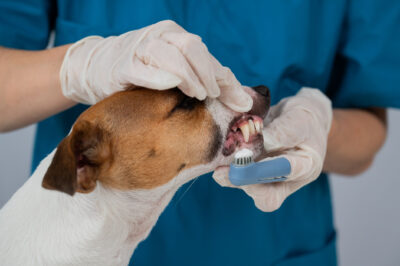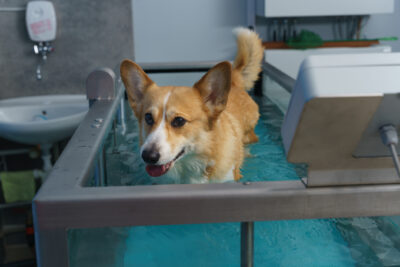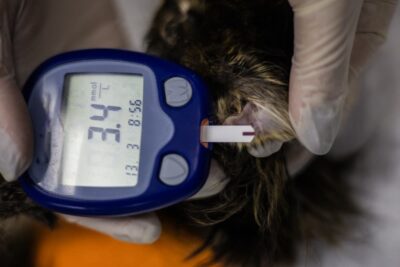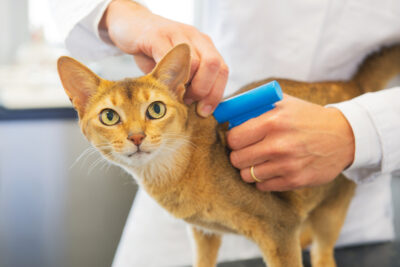How to Get Rid of Tear Stains on Dogs

Overview
- Tear stains are dark or reddish brown stains under a dog's eyes.
- They are caused by an overflow of tears that accumulate on a dog’s face.
- Many times, tear staining is an aesthetic issue. But they could signal a medical problem.
- Cleaning the stained area with warm water or saline solution can help remove them.
- Regular grooming and keeping the eye area dry are the best prevention methods.
If your dog has a light coat, he might have noticeable dark tear stains around his eyes. Often times, it’s simply an aesthetic issue, but tearing and tear stains on dogs can also indicate a more serious underlying health condition. Initiating contact with your veterinarian when you notice tear stains is important.
If your dog is prone to tear stains (even dogs with dark coats can get them) the following primer will help you understand more about them and show you the best ways to remove tear stains on dogs.
Always get veterinary approval before attempting any at-home treatment.
What Are Tear Stains?
Tears are essential to eye health. They provide the eye with nutrients, aid in vision, and protect the surface of the eye, says Dr. Caroline Monk, a board-certified veterinary ophthalmologist at BluePearl Specialty and Emergency Pet Hospital in Westside Atlanta, Georgia.
Tear staining, she says, is an overflow of tears that accumulate on the dog’s face. “It can be due to decreased drainage (the most common), increased production, or poor quality tears.”
Tear stains on dogs look like streaks of dark black, brown, or red discolored hair under one or both eyes, says Dr. Jerry Klein, chief veterinary officer for the American Kennel Club (AKC). “The stains are often accompanied by eye discharge, but not always.”
The medical term for tear stains is epiphora. “Epiphora is not a disease, but rather a symptom that stems from a number of causes,” says Klein.
Tear stains can be simply a cosmetic issue requiring no treatment; or they can be an indication of something more serious, like a corneal ulcer (trauma to the eye’s surface layer), glaucoma, or infection.
What Causes Tear Stains on Dogs?

Tear stains usually happen when the tear duct system doesn’t drain properly, says Dr. Jessica Meekins, associate professor of ophthalmology at the College of Veterinary Medicine, Kansas State University in Manhattan, Kansas.
“Rather than coursing down the tear duct system that normally drains tears from the surface of the eye to the nose, the tears flow over the eyelid margin and onto the face,” she says.
The stains that discolor the fur below the dog’s eyes are due to porphyrins, an iron-containing molecule secreted in tears, says Monk. “These porphyrins accumulate, causing the dark discoloration.”
Here’s a closer look at some of the factors known to cause tear stains on dogs.
Breed and Color
Although tear stains on white dogs (and light-colored dogs) may be more obvious, they can occur in any dog, regardless of breed or color, veterinarians say.
However, some breeds appear to be more predisposed. Brachycephalic (short-snouted) dogs—like Maltese and Shih Tzus—tend to be prone to tear staining, which Klein attributes to the structure of their heads and eyes.
“The shape of the muzzle and the eye placement may prevent proper outflow of tears from the eye socket into the tear duct, which normally drains them away from the eye,” he says.
Eye Infections
Eye infections may cause excess tear production and weeping of the eyes, which can lead to tear stains and yeast or bacterial infections due to excess moisture.
“If the stains are brownish or rust-colored, they may indicate a current yeast or fungal infection on the skin, under the eyes, that is able to thrive because of the constant moisture from tears building up on the skin,” says Klein.
Pet owners who notice discoloration in tear stains or other symptoms of eye infections—such as redness, itching, or pawing at the eyes—should seek veterinary care.
Anatomical Abnormalities
Ingrown or abnormal eyelashes can sometimes rub the surface of the eye and cause excessive irritation and tearing, says Klein.
Another cause is entropion, says Klein. Entropion is a condition where your dog’s eyelids or part of the eyelid folds inward, causing irritation to the eye which, in turn, causes excessive tear production.
An incorrectly formed tear duct can also cause tear staining. Instead of draining the tears from the eye to the nose for swallowing, a tear duct that is abnormal or clogged won’t work properly, allowing eyes to spill over and cause staining.
Abrasion to the Eye
Corneal ulcers, in which the eye’s protective outer layer has been traumatized, can also cause excessive tearing. These are often caused by an injury, such as getting a thorn or blade of grass stuck in the eye, or due to a scratch from another animal during play.
Brachycephalic breeds, again, are more prone to these injuries, as their eyes tend to bulge, making it more likely that they’ll become injured. Dogs with a corneal injury will generally be very uncomfortable, and you’ll notice an active discharge rather than tear staining.
Glaucoma
This is a disease of the eye that can cause increased tear production, as well as pain, says Klein. “It is due to an eye having an increase in intraocular pressure.”
The pupils may change size compared to one another, and your dog will appear uncomfortable in the eye. While you may notice tear staining in dogs with glaucoma, you’ll also see a lot of active discharge.
Diagnosing Tear Stains
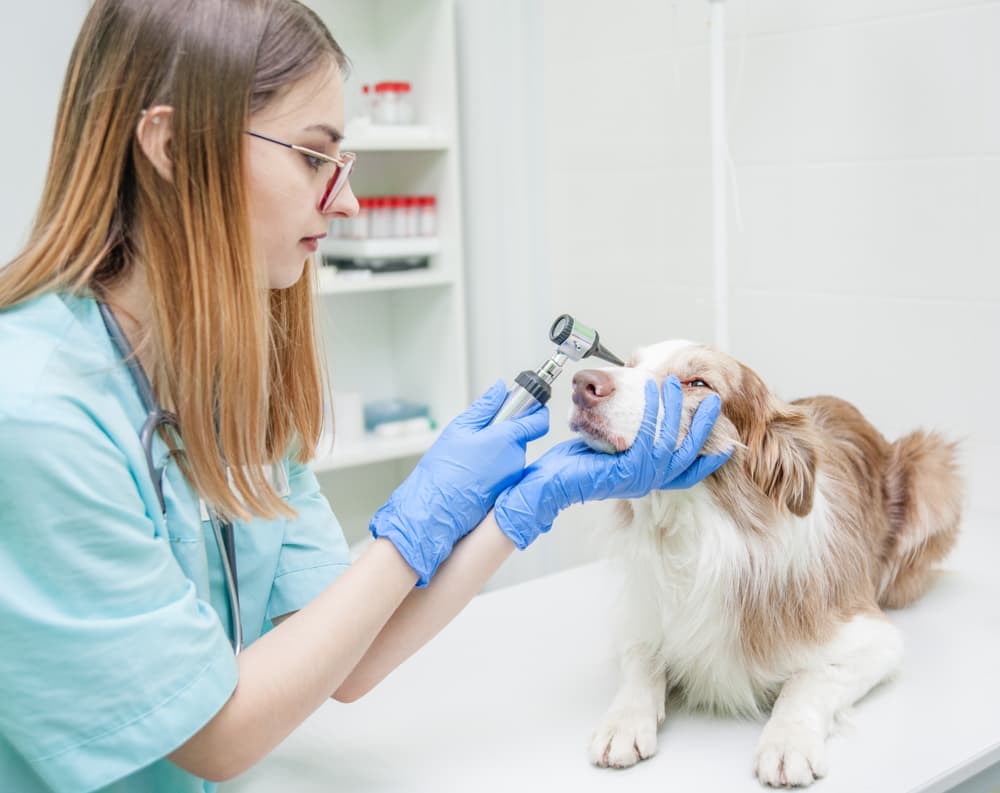
“Any change in tear staining, especially if it is accompanied by squinting or rubbing, warrants a vet visit,” says Monk. “Eye conditions can get worse quickly.”
Your veterinarian will do a thorough exam, taking your pet’s age and breed into account. Other specific eye tests can help determine whether tear stains are the result of a medical condition.
“He or she may instill a dye called fluorescein into the eye to note if it runs out of the nose as well as examining the eye anatomy in detail,” explains Monk. “In certain cases, referral to a veterinary ophthalmologist for further examination and treatment may be warranted.”
How to Get Rid of Tear Stains on Dogs
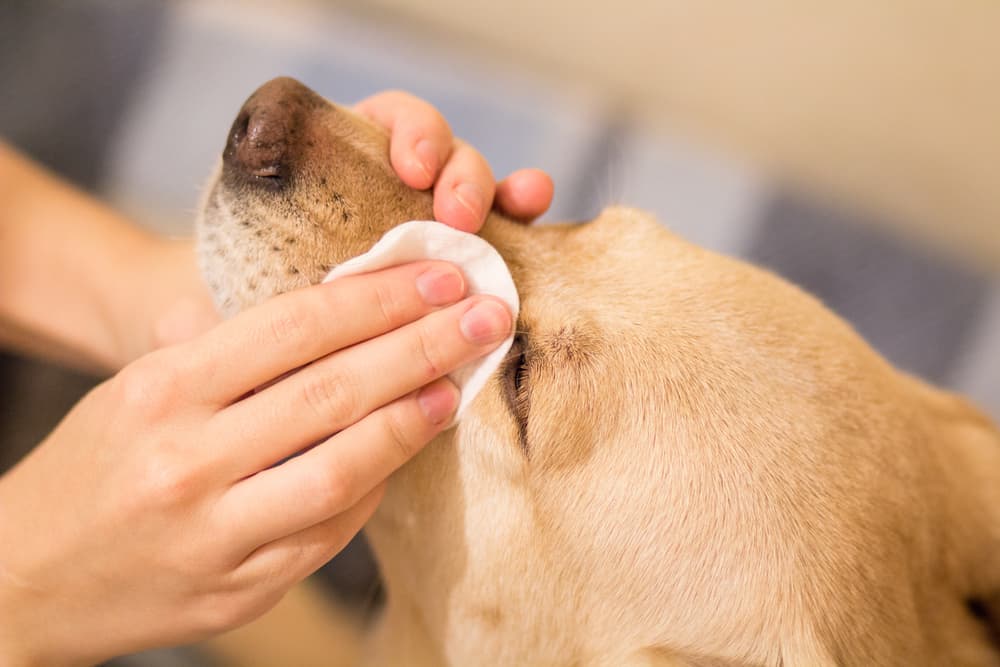
The first step in getting rid of tear stains is to establish the underlying cause.
“If your veterinarian suspects allergies, he or she may prescribe a steroid ointment as well as an oral treatment for allergies,” says Monk. “If he or she suspects that your pet’s eye shape predisposes him to the condition, then they may recommend trying some home remedies before considering eyelid surgery.”
Veterinarians have used antibiotics—and some still do—to reduce or eliminate tear staining, says Meekins. “However, that approach is not typically recommended due to concerns about promoting bacterial resistance,” she says. “Antibiotics should be used judiciously and only when medically necessary.”
Once your veterinarian has ruled out underlying health issues, ask if any of these DIY techniques are right for your pup.
How to Clean Dark Tear Stains on Dogs
The best way to minimize tear staining is to keep the eye area clean and dry, says Meekins. “This can be accomplished with dry cotton balls or makeup remover pads. Preventing contact time between the hair and the tears is most helpful.”
Another option, says Klein, is to clean the eye area with a washcloth or cotton ball dampened with warm water or saline solution.
“The aim of cleaning is to remove the accumulation of the excessive tears, then allowing the area to dry afterwards to prevent the build-up of moisture.”
There are several over-the-counter wipe products you can use to keep the eye area clean, but they vary in effectiveness. Just make sure the product is safe to use around a dog’s eyes.
“Each dog is different and not all dogs may react in the same way to every product,” says Klein.
Experts stress the importance of reading the label’s directions and getting your veterinarian’s approval before using any eye product on your dog.
Be careful to avoid getting any of the product in a dog’s eye. Klein says that placing a dog on a grooming table or getting a friend to gently hold your dog in place can help.
According to Monk, safe products you can use to clean the skin around the eye include:
- Dilute baby shampoo
- Commercially available eye wash for dogs
- Contact lens solution (on the skin only, never the eyes)
“Optixcare Eye Cleaner is a great liquid wash that is safe around the eye,” adds Monk
Removing Tear Stains: Products Not to Use
Products to never use to remove tear stains from dogs include:
- Alcohol
- Hydrogen peroxide
- Soap
Products that contain the ingredient tylosin are also not recommended. “Tylosin is an antibiotic, and long term use of a low concentration can lead to bacterial resistance,” says Monk. “Thankfully, most products no longer contain tylosin due to this concern.”
Getting Rid of Tear Stains on Dogs Naturally
Some pet parents might prefer to use natural products like coconut oil or apple cider vinegar to remove tear stains naturally on dogs, but Monk explains that these products have no medical use to remove stains.
“Some people feel that altering the pH of the dog may affect the production of eye stains and advocate adding a teaspoon of apple cider vinegar to a dog’s large bowl of drinking water,” adds Klein. “But this has not been scientifically proven to work.”
There are no quick fixes available or scientifically proven and tested natural products for eliminating tear staining in dogs.
“Using your veterinarian to get a diagnosis as to the cause of the tearing and maintaining good eye hygiene at home are the most important components to addressing the condition.”
How to Prevent Tear Stains on Dogs

Preventing tear stains is easier than trying to remove them once they’ve formed. Prevention starts with good hygiene practices.
Here are some tips for preventing tear stains on dogs:
Regular Grooming
The most important aspect is to keep the hair around the eyes short and clean.
“Some breeds of dog need their eye region trimmed every two weeks,” says Monk. “Groomers may offer to do just this part of the dog for a reduced fee.”
Regular Cleaning
Another important part of minimizing staining is to clean the area below the eyes, being careful to avoid contacting the eye itself, says Monk.
“After cleaning, you can use a small flea comb to gently comb out of the loosened debris,” she adds. “Be sure to gently pat the area clean with a soft, lint-free cloth as moisture can contribute to the stains and odor as well as causing irritation.”
Protect Against Allergies and Debris
If allergies are a factor, placing a lubricating drop in your dog’s eyes before he goes outside may minimize the conjunctivitis flare up (discharge is a sign of conjunctivitis), says Monk. “This can also be done before cleaning and grooming around the eyes to protect them from dirt and debris.”
She recommends looking for lubricating drops that are long-lasting and don’t contain an anti-redness medication. Do not use any products meant for humans without guidance or specific instructions from a veterinarian.
Diet Considerations
Dietary changes may make a difference, but nothing has been consistently shown to resolve the issue, says Monk. For some dogs, a hydrolyzed diet—where water is used to break down protein into very small pieces—may help skin and eye issues.
“Providing exclusively distilled water can help if you have water with high iron concentration (hard water) at home,” she says. “Some dogs will benefit from the addition of probiotics, but not all will respond.”
Additionally, says Monk, a high-quality diet may also reduce the porphyrin concentration in tears, which could reduce tear staining. However, no formal studies have been conducted to prove that dietary changes are an effective remedy.

